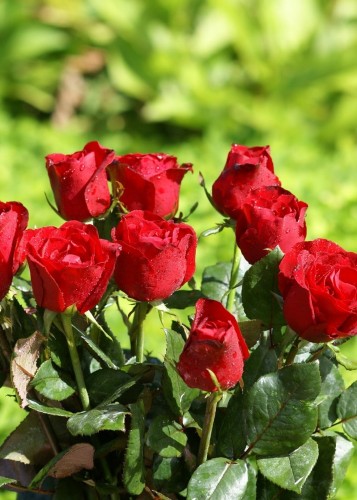Background Rose is one of the important and economic cut flowers in the world. Different environmental parameters can affect Rose-cut flower postharvest; which one of the most important parameters is light. Different aspects of light such as the light spectrum can affect the postharvest of the rose flowers.
Aim: Post-harvest wastes along with cut-flower roses in Iran, cause the supply of this product to be low compared to the area under cultivation. Therefore, in this study, the aim was made to investigate the effect of different light spectrum treatments on postharvest and find a scientific and practical solution to solve this problem.
Methodology: This research was investigate experimentally in 1399 based on a completely randomized design in the Horticultural Sciences Department, the University of Tehran, Aburaihan campus. In this experiment, LED panels with a light intensity of 150 μmol. m-2. s-1 were used in red-blue spectra with ratios of 10: 1, 6: 1, 4: 1, and dark treatment. Then, in order to evaluate the plant response and to evaluate the post-harvest, the VBN index introduced by the Dutch company Alsmeier was used daily. OJIP (chlorophyll a polyphasic fluorescence) test was used every other day to evaluate the photosynthetic system. On the 10th day of the experiment, the amount of photosynthetic pigments and the amount of anthocyanin were examined.
Conclusions: The results of the study showed that different light spectra can affect significantly the postharvest and all measured traits at the level of 1%. Treatment of different percentages of red-blue light spectrum significantly changed the postharvest and dependent parameters. Additionally our result show that, photosynthetic activity can affect postharvest. The results show that the spectrum of blue-red with a ratio of 4: 1 is a more suitable treatment for keeping cut flowers of rose. This is due to the opening of the stomata increase in the spectrum of blue light, followed by the release of ethylene gas from inside the leaves and also the increase of gas exchanges in the plant.
